AlphaFold: from accuracy to application?
DeepMind AI’s impressive protein structure prediction accuracy hints at a huge future role in biomedical research – but turning potential into performance will depend on our faith in AI’s conclusions
Shortly after the scientific community learned about AlphaFold2’s performance, amid excitable headlines surrounding DeepMind’s newest AI tool, we tried to look beyond the hype to assess the role that it might play for biomedical research and drug discovery in this article. We have followed up on AlphaFold’s progress in a subsequent article, describing the publication of AlphaFold2’s source code and database.
Continue reading for our initial assessment of AlphaFold2 in 2021.
In late 2020, DeepMind’s success in creating an Artificial Intelligence (AI) tool for protein structure prediction – AlphaFold – spawned a flood of exhilarated headlines. The DeepMind team claimed to have found “a solution to a 50-year-old grand challenge in biology”. Nature journal proclaimed: “It will change everything”. Behind the headlines, however, experts engaged in an instant and heated debate on the question of whether AlphaFold had indeed “solved” the protein folding problem.
An artificial intelligence tool to predict protein structure
In 2020, DeepMind’s AlphaFold2 caused a stir in the scientific community. AlphaFold2, a neural network trained on publicly available protein sequence and structural data, predicted protein structures at the 14th biennial Critical Assessment of protein Structure Prediction (CASP) contest with unprecedented accuracy. For many scientists, AlphaFold’s performance signaled an AI aha-moment, maybe the first for real one for the field of biomedical research.
Notably, while heated arguments ensued about the question of whether AlphaFold had solved the “Protein folding problem” - it hasn’t but that doesn’t matter all that much - we tried to focus on potential problems that AlphaFold might tackle for biomedical research and drug discovery.
Experimental techniques have so far helped us derive the structures of some 170,000 (of the 2m known) proteins, but these methods are costly and time consuming. There is certainly room for computational prediction methods to enhance the process.
To make a true impact, though, scientists of different disciplines need to identify the research questions that can realistically be tackled by AI.
AlphaFold application I: fostering disease understanding
AI-based protein structure prediction could bridge the gap towards a better disease understanding of diseases, for which structure function-relationships of disease-causing proteins are are missing including a number of rare genetic diseases, and protein misfolding-related neurodegenerative diseases such as Parkinson’s, and prion diseases.
While this is not likely to directly benefit patients, better disease understanding should improve diagnosis and treatment in the long run.
AlphaFold application II: deciphering pathogenic proteins
Humans will continue to face the emergence of novel pathogens. To counteract those threats, researchers need to understand how they infect humans, how they spread, and how they interact with the immune system. Protein structure prediction can help to identify exposed epitopes and druggable sites. As we have witnessed in 2020, speed is an important factor in a pandemic response. Here, AlphaFold2 has already proved its potential worth: faced with a bacterial protein that researchers at the Max Planck Institute for Developmental Biology in Tübingen had spent a decade deciphering, AlphaFold2 solved the structure within half an hour.
AlphaFold application III: higher efficiency in drug discovery
Structure-based drug discovery applications, such as screening methods which identify drug-target interactions based on in-silico predicted protein structures, could save time and money in the identification of new drugs. Structural predictions of proteins involved in drug metabolism, and their interactions with drug candidates, could improve drug safety and reduce animal testing. Moreover, improved understanding of how proteins fold from their amino acid sequence could herald a new age of protein engineering, including therapeutic proteins.
AlphaFold beyond the hype: the real potential for drug discovery
Although AlphaFold has the potential to tackle many of the challenges of drug discovery in future applications, caveats remain with the current version. Despite accurately predicting membrane-bound proteins – which constitute a major class of drug targets, difficult to assess by X-ray crystallography – AlphaFold’s predicting of structures within protein complexes has been less impressive. Many of the dynamic signalling processes within cells happen in complexes. Those processes are often perturbed in disease, making the signalling proteins another important class of drug targets.
Moreover, the usefulness of AlphaFold and similar tools is still confined to proteins for which experimental predictions can be derived, which serve as training sets to teach the algorithms and as validations to assess the algorithm’s performance.
AlphaFold2’s performance has given us a taste of what AI will do for biology and drug discovery within the foreseeable future. Yet to leverage the full potential of this impressive tool, the communication gap between disciplines must be bridged. Only then can we tweak the AI towards the areas most relevant for biomedical research.
At idalab we used an interdisciplinary approach, using biologists, biotech experts and data scientists to derive a unique protein scoring platform. Next to other levels of relevant information, we have also implemented AlphaFold2-based structural information. Our Unified Data Platform can be used by drug developers to contextualize and prioritize protein classes that are suited to their specific targeting approach, from classical small molecule inhibitors to covalent inhibitors, PROTACS or antibodies. Get in touch to learn more.
Further reading
AlphaFold: a solution to a 50-year-old grand challenge in biology (DeepMind blog) gives an overview of the protein folding problem, AlphaFold2’s basic architecture and features, as well as initial ideas on real-world applications. Also includes a short video, explaining the technology.
‘It will change everything’: DeepMind’s AI makes gigantic leap in solving protein structures (Nature) discusses AlphaFold2’s performance at CASP14, featuring quotes from different researchers working in the field discussing AlphaFold2’s potential impact.
Protein Misfolding and Degenerative Diseases (Nature Education) covers the basics on protein (mis)folding and highlights the roles of misfolded proteins for neurodegenerative diseases such as Alzheimer’s and Parkinson’s, and prions.
Zika virus proteins at an atomic scale: how does structural biology help us to understand and develop vaccines and drugs against Zika virus infection? (Journal of Venomous Animals and Toxins including Tropical Diseases) discusses how structural understanding of pathogenic proteins can aid development of drugs and vaccines – using the example of the Zika virus.
Structure-Based Virtual Screening: From Classical to Artificial Intelligence (Frontiers in Chemistry) describes different techniques in structure-based drug discovery, and the roles that computational techniques – and especially AI – can play in the identification of new drugs based on structural knowledge.
Advances in protein structure prediction and design (Nature Reviews Molecular Cell Biology) provides detailed basics of protein folding, protein structure prediction and protein design, highlighting a number of recent developments in the field (as of 2019).

